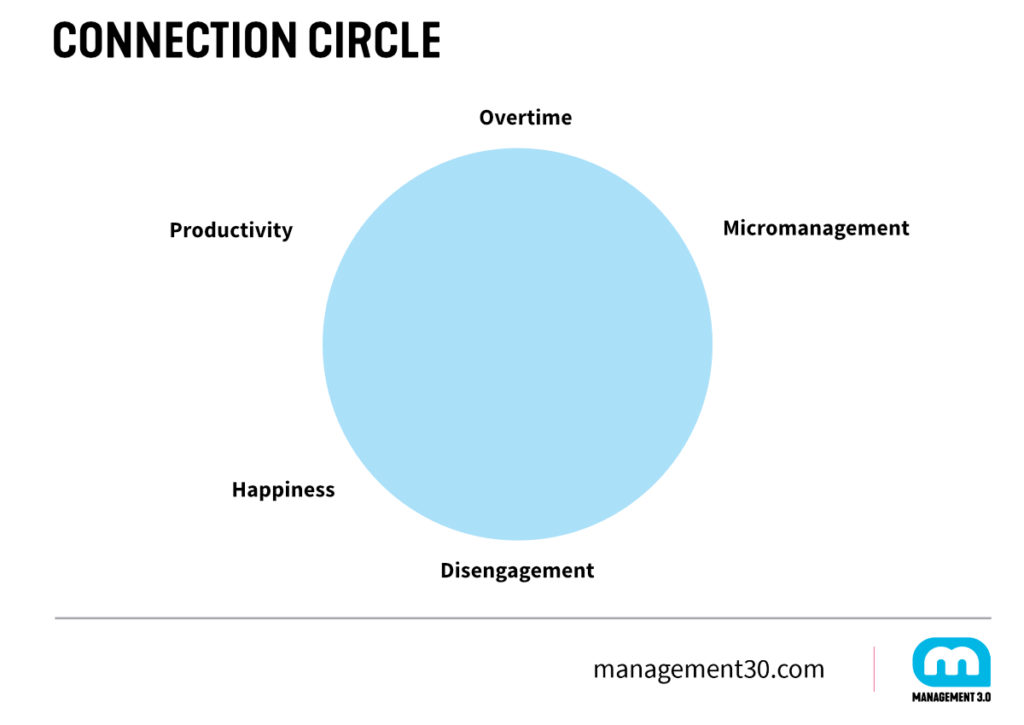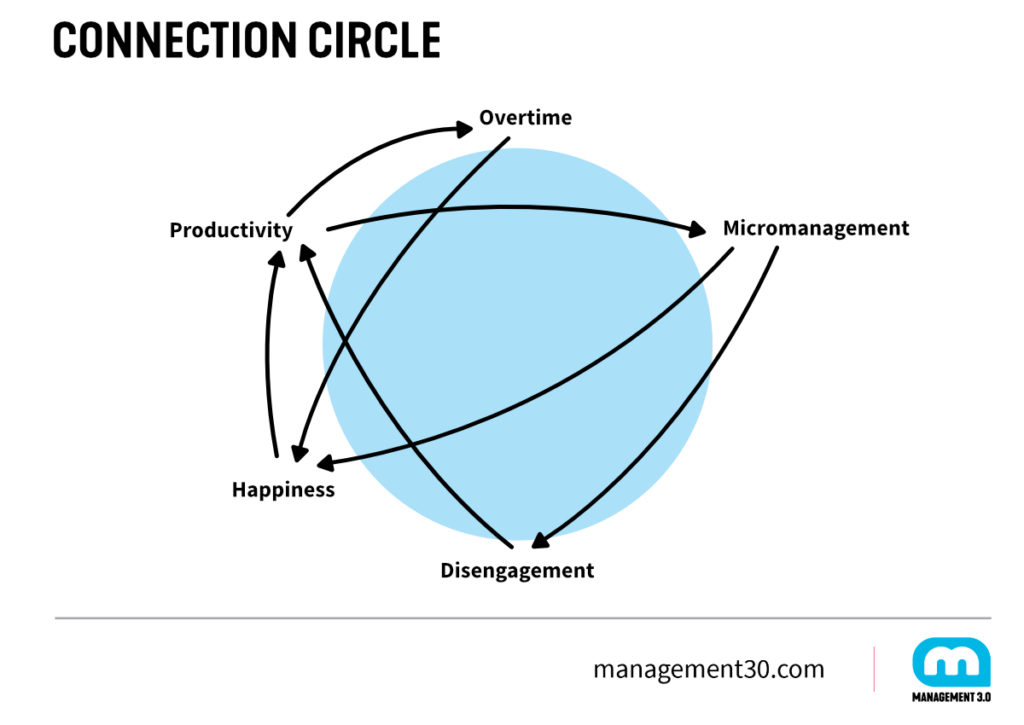Connection Circles help you to visualize relationships in a Complex Adaptive System. They allow you to understand complexity by seeing causes and effects in the system. Connection Circles can also help you to identify feedback loops.
How to create a Connection Circle
- Create a circle.
- Identify the key elements of the system you are examining. How do you know what a key element is? It meets these criteria:
- It is essential to changes in the system;
- Increases or decreases in the system;
- A noun can describe it.
- Write these elements around the circle (do not include more than 10).
- The next step is to look for cause and effect:
- Which elements are directly causing other elements to increase or decrease? Draw an arrow between these elements.
- Indicate an increase (draw “+”) or a decrease (draw “–”) for the second element in each relationship.
- Find all of the cause-and-effect relationships. These can be based on data, or they can be a hypothesis.
- Look for elements whose relationships form closed loops. These are feedback loops.
Example of a Connection Circle
We identified the following key elements:
- Overtime
- Micromanagement
- Productivity
- Happiness
- Co-workers not engaged (disengagement).
We connected the different elements that influence each other.
- Micromanagement influences disengagement
- Disengagement influences productivity
- Productivity influences overtime
- Happiness influences productivity.
Next we added + or -,depending on how the elements are influenced.
- Less productivity, increases micromanagement
- More micromanagement increases disengagement
- More disengagement lowers productivity.
By using micromanagement, you keep the system in place, and it will only get worse, creating a closed loop, feedback system: a reinforcing loop. You can find the same loop with overtime/happiness and productivity. If we would introduce trust, as element we could make a loop where more trust, will decrease disengagement, what will lead to higher productivity, what will result in more trust again. More productivity will also result in less overtime, which will result in increased happiness, which, in turn, will result in more productivity.
Learn how to use the Connection Circles
Connection Circles are part of the Change Management Advanced module and are therefore introduced in the Agile Change Leadership Workshop.





